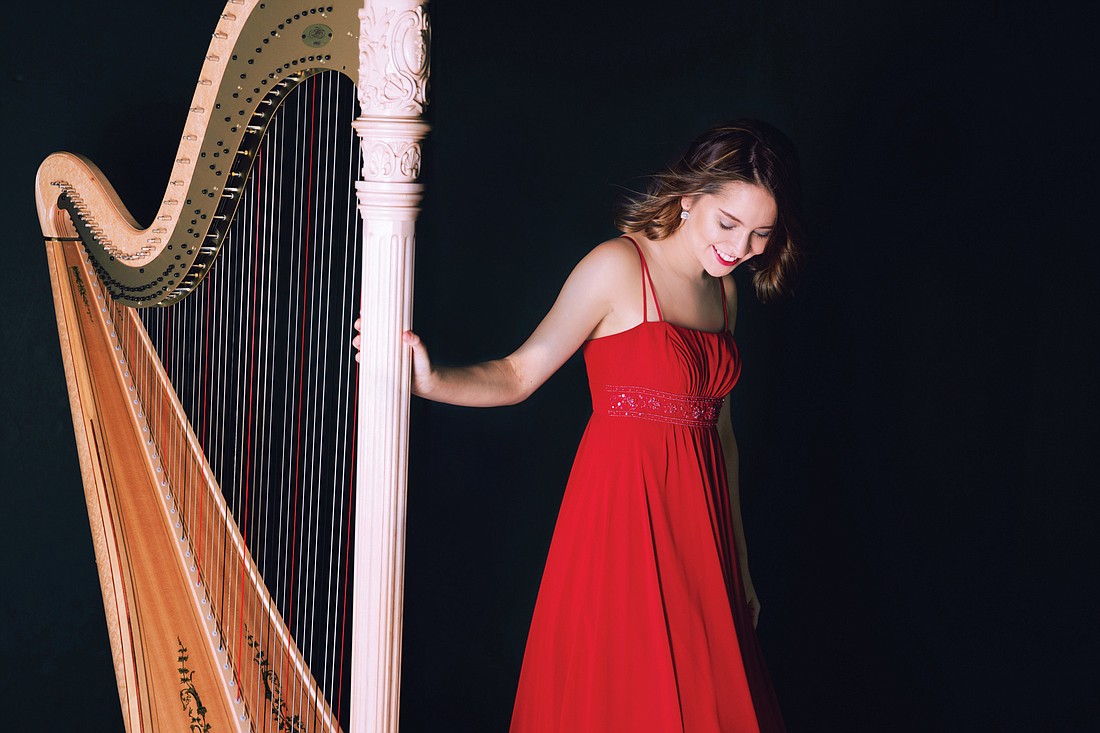- April 4, 2025
-
-
Loading

In “Travel and Passion,” the opening concert of the Sarasota Orchestra’s “Discoveries” series, the listeners were treated to not only differing kinds of passion, but four contrasting styles of music as well.
Passions of jealousy, loyalty, forbidden love, and the longing of young love were expressed in entirely different musical languages in this most interesting program conducted by Ruth Reinhardt, assistant conductor of the Dallas Symphony.
The musical and emotional highlight of the evening was Bright Sheng’s charming and daunting harp concerto “Never Far Away,” performed by harpist Katherine Siochi, who conquered this piece with all the ease and elan of a walk in the woods. Sheng, who was in Sarasota last season with ensembleNEWSRQ, has filled his concerto with melodies and effects of his native China, as translated to the modern harp. From endless harmonics, pedal slides and percussive noises to paper between the strings, the music, spirit and humor of the composer were so beautifully handled by Siochi that the audience was completely under her spell.
Dvorák’s “Othello” overture is one of his few examples of programmatic music, together with “In Nature’s Realm” with neither being as well known as his “Carnival Overture.”
“Othello” in many ways follows the musical path of Tchaikovsky’s “Romeo and Juliet,” written some twelve years earlier, starting with soft lyrical passages which develop into the orchestral strife of warring families, or in this case, a strong portrayal of Othello’s obsessive jealousy. Dvorák’s musical maturity is evident throughout this work, which is a challenge for both conductor and orchestra. With the exception of a few rough spots of coordination, the orchestra gave us all the facets of this musical drama.
In his “Pelléas and Mélisande Suite, which was composed as incidental music for Maeterlinck’s play, Fauré paints his musical picture with in wide swaths of pastels, completely different from the other three selections in the concert. His music is in many ways a precursor of Impressionism, but lacking in the splashes of musical color which occur later in the works of Debussy and Ravel. His orchestration and use of muted strings at times gave the impression of being played behind a scrim, enhancing the etheral effect of the score, and the play.
Both the orchestra and conductor seemed transported into this quiet and contemplative world, offering some of the best playing of the evening. Betsy
Traba’s flute solo in the well known “Sicilienne” was lovely, and well supported by beautiful sounds from her woodwind colleagues and the strings. Robyn Rocklein was the excellent soprano soloist in “Mélisande’s Song,” and her clean, clear sound never wavered in her portrayal of her hopeless love for Pelléas.
The concert ended with a rousing performance of Beethoven’s “Leonore Overture, No. 3”, one of four overtures he wrote for “Fidelio,” his only opera. This overture is certainly the strongest and most often played of the four, with his final effort, the “Overture to Fidelio,” being rarely heard outside the opera house. However “Overture #3” is often used in the opera, between Scenes 1 and 2 of Act II, setting the stage for the glorious finale, as it was in the recent Sarasota Opera production.
The overture virtually tells the story of the opera, from the early sadness and defiance of Florestan in the dungeon, through the valiant efforts of his wife Leonore to free him, to the final outbursts of joy and triumph as the offstage trumpet signals the arrival of the Minister of State, heralding the end of tyranny.
Conductor Ruth Reinhardt has a strong, clear beat, was excellent in her accompaniment in the Concerto, and at her best in the long phrases of the Fauré. It’s difficult for both orchestra and conductor to make the drastic transition from the smooth and horizontal melodies of the very-French Fauré to the strongly vertical and comparatively harsh sounds of the Germanic Beethoven, but it was made seemingly without blinking an eye.
The near-capacity audience at the Sarasota Opera House gave everyone a well-deserved standing ovation, and the presence of families and younger concert goers bodes well for the future of orchestral music in Sarasota.